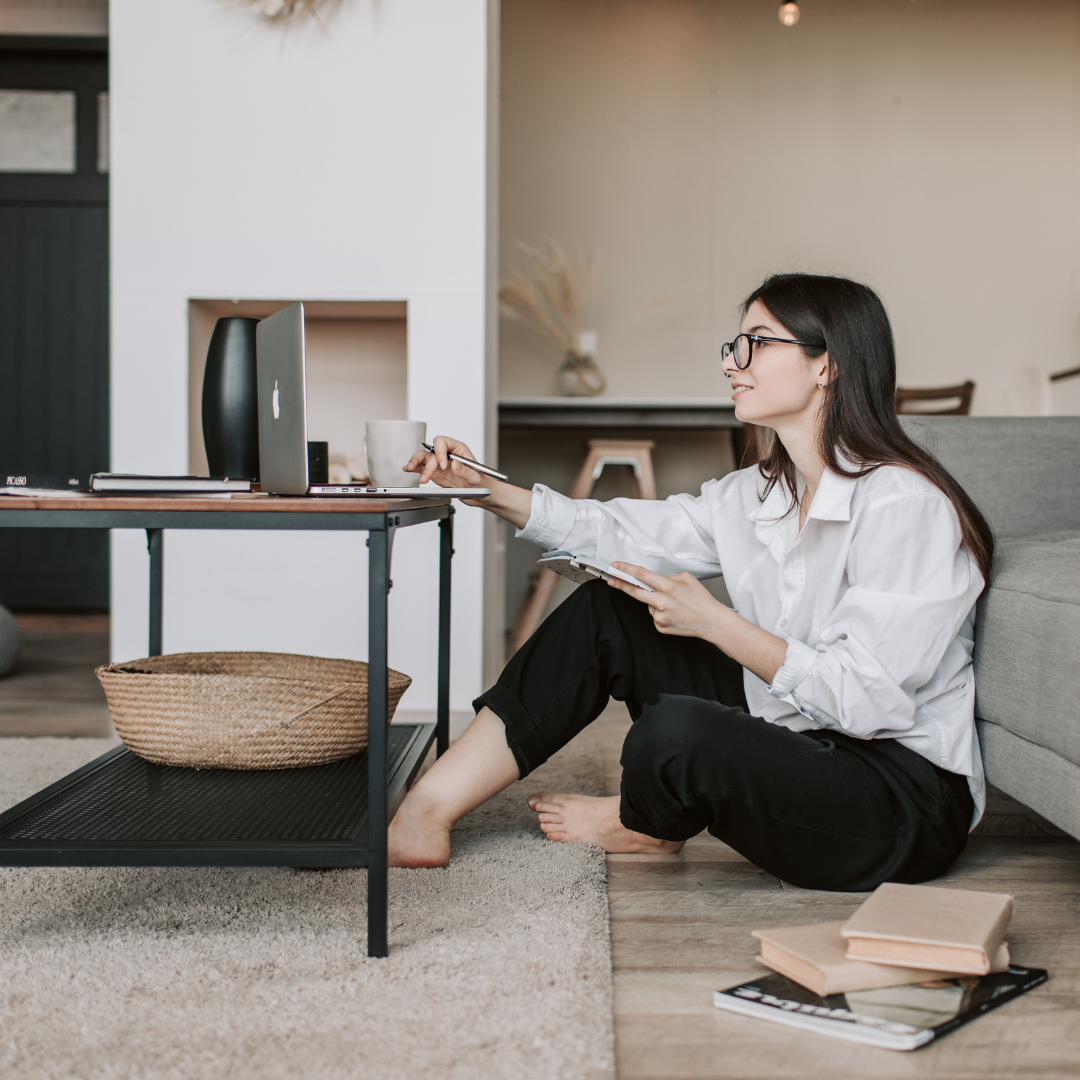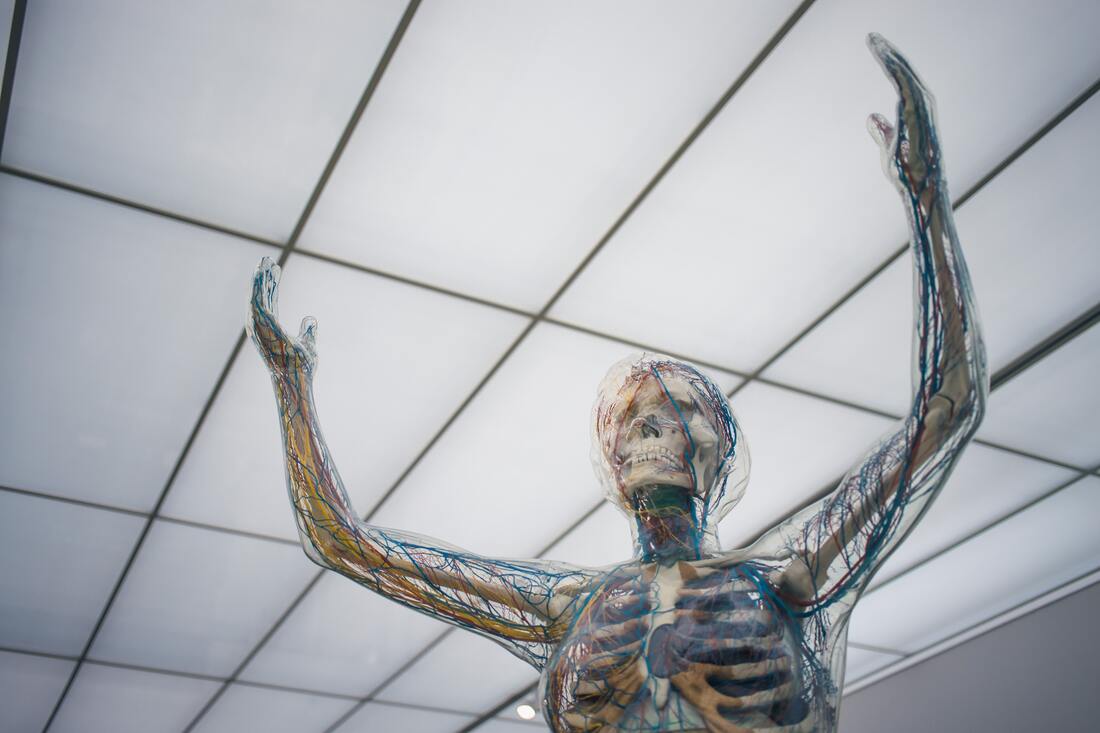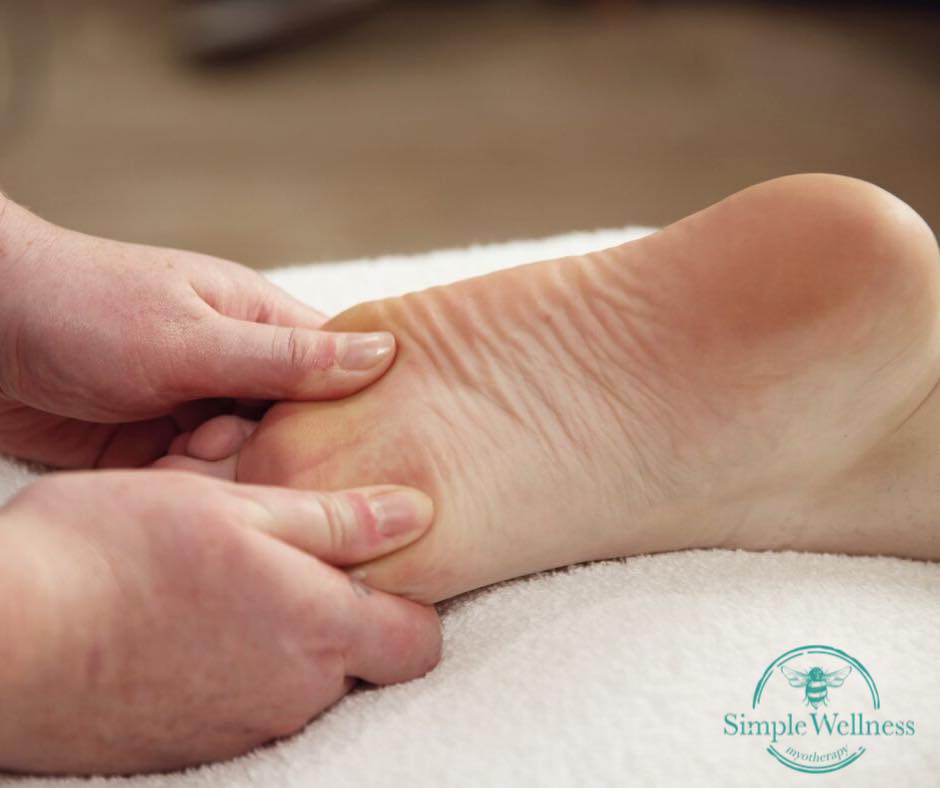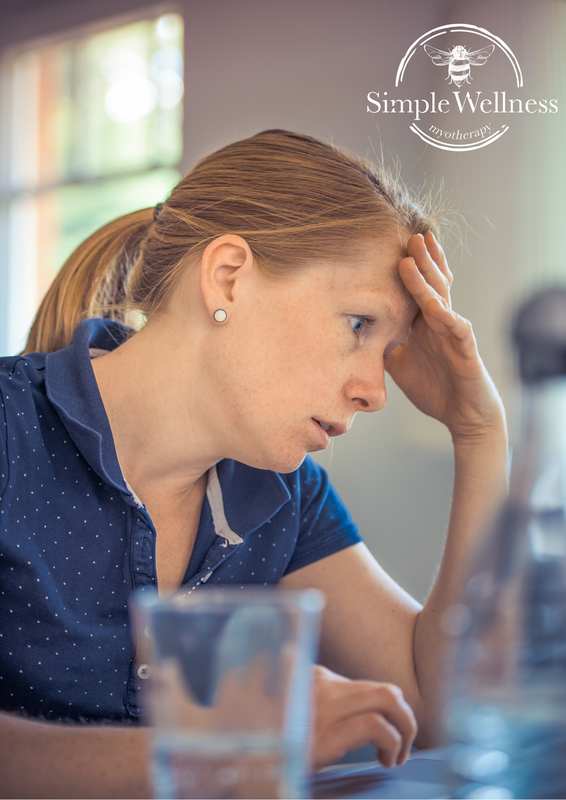 Hey! I'm Jacqui the newest member of the Simple Wellness family! I'm so excited to be able to offer you my unique blend of my 18+ years of experience in the natural therapies industry. When people ask me what do I do for a living, I will often simply say, I am a Remedial Massage Therapist. I have been doing it so long, it is a natural response for me. However there is so much more to what I do now compared to when I started my journey as a massage therapist. I have always had an interest in mind/body connection and how mental/emotional & spiritual health can all have an impact on our physiology. In my early years of practicing, I began to realise that I could be helpful in treating & managing people's pain and discomfort physically, but I felt that I was only treating one aspect of the person, not their whole being. I wanted to know more about the mind/body connection and how I may be able to be of service in my own unique way with a truly holistic approach to the individual's wellbeing. Being an avid yoga enthusiast for many years, I could clearly see the correlation between movement and health/wellbeing. I could also feel it! And it wasn't just about less pain and better movement, I felt fantastic! On so many levels. Levels I had forgot even existed! It seemed to balance me in a way that was so satisfying and sustainable. I was curious to know more about the mind, the energetic life force flowing through all of us, and how to harness the power of my breath. So naturally I felt drawn to meditation and mindful movement practices. I have studied a range of other modalities including Meditation & Yin Yoga teacher training, Reiki & Qi Gong. I am now also a meditation coach for new meditation teachers in training with Australian Centre for Meditation & Mindfulness. My passion for wellness extends far beyond the physical. Clients often see me for stress & mental/emotional-related conditions that can lead to imbalance and physical pain. These include headaches, migraines, tension, aches, poor sleep quality, fatigue, malaise. As well as all manner of muscular pain conditions. I believe in the power and need for human touch. The clinical applications of my treatments may be similar for certain symptoms and conditions, however I have a unique and tailored approach to each individuals wellbeing needs which includes an intuitive and holistic treatment style. I look forward to working with you to begin your wellbeing journey with me. Book your appointment with me during school hours on Mondays and Wednesdays, or in the afternoon on Thursdays. Yep! We're open on Saturday April 3rd and Sunday April 4th, so if you find yourself in need of a remedial massage or myotherapy appointment we are here to help!
We will be closed on Good Friday (April 2nd) and Easter Monday (April 5th) for the weekday public holidays, but you can still catch us over the weekend. Appointments are going fast, check our availability and book in soon! We hope you have a happy and safe Easter! Thats right! We have a new face in the clinic! Meet Duke Autret, our new Remedial Massage Therapist! Duke got his Remedial Massage qualifications in 2019 from Australian College of Fitness & Bodywork, which is the same college that Mel studied her Myotherapy qualifications.
He is also close to completing his certification as a Pilates instructor, and interested in leveling up to become a Myotherapist! He's a body and movement nerd - and you know how much we love nerds here at Simple Wellness Myotherapy! In addition to a feel good remedial massage, he will be able to give you some great take home movements that help which you can use between your treatments to boost your recovery! Our long term plan is that once Duke has finished his Pilates instructor training, we want to offer combination treatments where you can experience half the appointment as manual therapy, and the other half as a tailored pilates program. You can book with Duke for remedial massage on Thursdays 3pm-7pm and Sundays 12pm-6pm. We're finally back after a long lockdown period, and we're seeing a lot of people with very similar pain issues in their neck, shoulders and backs. Working from home definitely seems to be taking its toll on peoples bodies, so while we're very happy to help you out by releasing those sore, tight muscles, we also wanted to give a few of our top tips on how you can shake up your daily patterns to reduce your pain. Take Regular Breaks
We can't emphasise this one enough!! The most common thing we're hearing these last few weeks since returning to the clinic is that people are working longer hours. Even if you have the most perfect posture, staying in one position for too long can leave you feeling stiff, sore and fatigued. Think about it this way - if we asked you to hold your coffee cup out in front of you at shoulder height, you could probably do that. If we asked you to hold it there for 6 hours without taking a break, your coffee cup would feel like it weighed a ton, your arm would probably start to shake or cramp, and you would end up trying to lock your elbow joint into position to stabilise your arm. Your muscles would be tired and sore. You might even have trouble allowing your arm to lower because you had been stuck in that position for so long, or find that trying to raise your arm again afterwards felt like you'd been to the gym for 10 hours. Try to take a quick movement break at least once per hour. This could be as little as just standing up, stretching your arms above your head, rolling your shoulders or doing a little spinal twist. You could use this chance to drink some water, go to the toilet, make a cup of tea, or stand in the sun. Trust us, your body will thank you for the movement and the chance to reposition. Set Up Your Workstation You're probably not the only one working from your home right now. We know a lot of people have to share their work from home space with partners and kids, and theres only so much space to go around. As best you can, try to set up your workspace so that your equipment is at the right height. This means screens at eye level, mouse and keyboard positioned so your arms can be at 90 degrees, and your chair is at the height that allows you to have your feet resting comfortably. We know this isn't possible for everyone. Some patients we've seen this last week or so have been telling us they have to work from a low coffee table, or at a high kitchen bench, or even working from bed. If this is your situation, please keep in mind that regular breaks are going to be even more important for you! Stretch and Move! There are plenty of easily available online stretching and movement classes that you can use to help guide you through some feel-good motions. Our favourite is Erica Webb's online yoga and pilates studio, which offers a great variety of classes including what Erica calls "movement snacks" which are short 5-10 minute videos that you can do anywhere, any time! Memberships to Erica's studio are less than $10 a week, and include a selection of on-demand classes and live yoga classes. Set Strong Work/Home Boundaries The blurring of the line between work and home has been strong this last year! We're hearing from people that they are often logging in early or continuing to work late to try to get ahead of deadlines or hectic work weeks - and often these extra hours are not even paid hours of overtime! A once in a while overtime session may be occasionally needed, but we encourage you to try to avoid the temptation of working longer hours on a regular basis. Use Your Self Care Tools Massage balls, foam rollers, magnesium creams, heat packs - all of these tools that we talk about in the clinic are really great ways that you can help reduce tightness and tension in your body between treatments with us. If you're not entirely sure how to use them, ask us at your next appointment and we can show you the best way to get into your problem areas using tools you already have, and give you recommendations of new self care tools that are a great investment for your health! (We don't sell any of these products, but we can direct you to reputable stores or websites that you can purchase from) Book a Treatment! Now that you can access manual therapies again, book in with us! We'll help you make some quick improvements to tight aching muscles, and help you plan for reducing pain while you continue to work from home or once you get back to your office! Have you or someone you love been diagnosed with multiple sclerosis? The symptoms of this condition can range from uncomfortable to debilitating. But the good news is that manual therapy techniques that fall under the scope of myotherapy can help to alleviate some of these symptoms. Let’s take a look at how myotherapy can help with multiple sclerosis. What is multiple sclerosis? Multiple sclerosis, or MS, is an autoimmune disorder that affects the central nervous system. ‘Sclerosis’ means ‘scars’, which occur throughout the central nervous system. These scars interfere with the nerve impulses within the brain, the spinal cord and the optic nerves. Because the scars can occur anywhere throughout the central nervous system, different symptoms can manifest. Over 25,000 Australians have been diagnosed with MS. Most are diagnosed between the ages of 20-40, but it can occur in people who are younger or older. Women are far more likely to be diagnosed with MS. What are the symptoms of multiple sclerosis? Because multiple sclerosis can occur throughout the nervous system, there is a wide range of symptoms that people with MS may experience. No two cases are the same. However, symptoms will typically fall under five main categories:
How can myotherapy help with multiple sclerosis? This can really depend on the primary symptoms you’re looking to manage. However, myotherapy has a diverse range of tools and techniques that may help to minimise symptoms related to motor control, fatigue and neurological issues. Some of the symptoms myotherapy may help to relieve include:
Massage and multiple sclerosis One of myotherapy’s tools that has some promising research to back it up is massage therapy. There have been several small studies into the benefits of massage therapy for MS. They found that massage therapy was able to relieve pain, fatigue and quality of life. One study found that massage was more effective at relieving symptoms compared to exercise therapy. It also suggested that combining massage with exercise therapy could have even greater benefits. Managing multiple sclerosis symptoms with Simple Wellness Myotherapy Here are Simple Wellness Myotherapy, we have had patient outcomes such as:
Every case of MS is unique, so we cannot guarantee that you will achieve the same results. But we can say that our practitioners are experienced when it comes to MS, and will go the extra mile to help you find as much relief as possible. Simple Wellness Myotherapy also works as a healthcare provider for those receiving employment assistance through MS Employment Services. If you are receiving employment assistance, you can have a chat with your Occupational Therapist to see if myotherapy can be incorporated into your package. Ready to make a booking? Click here to visit our booking page. Does this sound familiar? Terrible pain in your first few steps in the morning. Pain on standing up if you’ve been sitting for a little while. Putting weight on that foot can be agony. You feel it strongest in the heel or arch of your foot. Once you get moving it seems to calm down. If you're saying yes to these symptoms, you could be dealing with a condition called Plantar Fasciitis. Its quite common, and one of the most frequent foot pains that our myotherapists help people with. Plantar Fasciitis is a very painful condition that affects your heel and the sole of your foot. Often the mornings are the worst pain, people often explain they feel like they have to hobble about for the first few minutes of their day.
Usually it affects one foot or the other - some very unfortunate people can get both feet affected at the same time. Symptoms include heel pain; arch pain; altered walking patterns; cramps or spasms in the sole of the foot. Usually the pain reduces after getting moving, but those first few steps can be uncomfortable through to excruciatingly painful. What kinds of treatments work best for Plantar Fasciitis? The techniques I've found that work the best for people with Plantar Fasciitis are:
The hands on treatment sessions are only part of the recovery plan though. Like with most pains or injuries, looking at the way you move and stretch outside of your time in the clinic is important to helping you feel better, quicker. Our therapists will show you some simple but effective movements that help you to stretch your foot and leg to reduce the pain. We can also offer you some temporary pain relief suggestions like ice bottle rolling and using spiky physio balls. Ready to look at a plan for kicking Plantar Fasciitis? Book a 60 Minute Initial Consultation with us. We'll assess your movement and muscle balance, give you a feel-good hands on treatment, and walk you step by step through your treatment plan. Headaches are one of the most common issues our Myotherapists and Remedial Massage Therapists help people with. There are a bunch of variable ways that headaches can turn up - sometimes affecting only one side or the other; sometimes just the top, sides, or back of your head; sometimes very pinpoint spots like right behind your eyes; squeezing tension bands across your temples and eyebrows; starting from your jaw and spreading upwards; or just generally your entire head.
No matter which type you get, its never a good day if you need to persevere with a headache. There are a lot of factors that can influence headaches. Trigger points in your neck, shoulders and face can send some intense referred pain headaches, and these trigger points respond particularly well to hands on treatments like remedial massage, cupping and gentle mobilisations. Dehydration and exhaustion can be linked with headaches. If you suffer regularly, keep an eye out for your usual water intake and sleep patterns. By improving your quality of sleep and the amount of water your body has available to use, you may find your headaches reduce or go entirely! Stress and hormonal changes can also lead to headaches. Have you ever noticed how your neck, shoulders and face become much tighter when you're under stress? Do you clench your teeth, or hunch into a protective position? Some women find that they get a headache at specific times during their cycle due to changing hormone levels. Hormones are something that are outside of our scope as remedial massage and myotherapists, but many of our patients have found Acupuncture to be a useful tool in balancing hormones. Our good friend Amanda at Upwey Acupuncture can help you explore hormonal treatment options, including menstrual and menopausal symptoms. Eye strain can bring on headaches, as I found out last year! We got a new TV and I got intense tension band headaches every time I watched it for longer than about 10 minutes. My optometrist checked my vision and prescribed my glasses to help reduce the strain on my eyes, and it helped resolve my headaches! If you already wear glasses, is it time for a check up? If you don't wear glasses, perhaps an eye test could be helpful for you. Aside from taking over the counter medications like Panadol, how can you get help with easing and resolving a problematic headache? A great first step is to book with one of our therapists so we can assess your headaches and determine if they have a musculoskeletal origin. We can often help people get rid of their headache and set them up with a plan to prevent future headaches. A Short 40 Minute Initial Consultation is ideal for your first appointment to investigate your headaches. You’ve been told you have Tennis Elbow, but you don’t even play tennis? The pain can catch you off guard, and make normally simple tasks feel really difficult - opening jars, turning door handles, shaking someones hand, maintaining your grip on something. This type of pain can feel like a deep muscle aching, a stretch in the muscle, sharpness when you move, or a combination of these feelings. Our Myotherapists and Remedial Massage Therapists can help by creating a treatment plan for you that relieves the pain and gives you back your strength and ability to turn, twist and grip again.
Tennis Elbow is a painful condition of irritation and inflammation of the tendons around the outer side of your elbow. Its normal to feel the dull, constant ache throughout the day, and have the pain turn into sudden, sharp or shooting pain when you move your elbow or wrist, or try to grip something or twist a lid or door handle. It can happen if you spend a lot of time doing repetitive wrist movements like typing, using tools, carrying something heavy for a long period of time. We see it with people who play musical instruments too, or video gamers who get so into the game they forget to take a break for hours on end. Our typical treatments for this kind of pain will look at assessing your movement and strength first so we can plan out some short and long term goals. Our short term goals are usually the ones you want the most - to get rid of this awful pain!! But its also important to plan for the long term goals of recovering the strength in the area so that this feeling doesn't come back. A series of hands on treatments can help to reduce the pain and sensitivity in the area, and we'll give you a few movements that help that you can focus on between treatments. This is a pain that tends to respond well to doing some stretch and strengthening movements each day, starting with small easy movements, working up to more challenging or weight resisted ones. The hands on part of your treatment may include some remedial massage, cupping, active release techniques, dry needling, and trigger point therapy. Afterwards we can support your elbow with kinesiotaping to reduce pressure over the joint and tendons. Do you need help with elbow pain? Our therapists are ready to help assess your pain and work with you to create a treatment plan to reduce the irritation and restore your movement and strength. Book your first consultation with us now! Most people have heard of the Rotator Cuff being a big culprit of shoulder pain, but do you know what it is and how to get help? Our Myotherapists and Remedial Massage Therapists help a lot of people with Rotator Cuff pain - its one of our most commonly treated pains! The Rotator Cuff is a group of 4 muscles that all work together, and they have different actions. So when you come in with a Rotator Cuff injury, the first thing we’ll work out for you is which muscle is causing you to feel the pain.
The job of the Rotator Cuff group is to move and stabilise your shoulder, and it does that by making what I like to light heartedly call the Shoulderblade Sandwich. Imagine your shoulderblade bone (scapula) as the filling of the sandwich, and the Rotator Cuff muscles are the bread on either side. The muscles on the outer side work to lift your arm and rotate it outwards away from your body, and the inner muscles rotate your arm inwards. The most common issues we see with Rotator Cuff complaints is tight muscles referring pain, or muscle tears. Rotator Cuff referral pains can be felt locally around the shoulder, as well as further down your arm, elbow, wrist and hand. If you've got a Rotator Cuff tear or a partial Rotator Cuff tear, you'll likely notice pain and difficulty on raising or rotating your arm. Muscle tears can be identified on an ultrasound. If you’ve already had the ultrasound and been given the report that you have a tear, the next step for you is to rehabilitate that muscle, and we can help! Pain from shoulder and Rotator Cuff injuries usually respond well to hands on treatments like massage, cupping, or dry needling. We also like to help stabilise your shoulder using kinesiotaping. So how do you get help if you think you might have a Rotator Cuff problem? Firstly, book a time to come see us so we can help you find which of those 4 muscles is acting up. We’ll do some muscle testing and make a plan for reducing your pain and getting you strong again. If we think you may need an ultrasound to check for possible muscle tears, we can refer you to Dr Waj Dib here at Together Medical Family Practice in Knoxfield. Dr Dib is a fully bulk billed GP who can send you for scans if you need them. Whether you’re an athlete or a weekend warrior, an injury can set you back when it comes to your exercise goals. How you handle an injury can make a big impact on the recovery process. If you want to speed up your recovery and minimise the risk of injury in the future, this is the guide for you.
What to do immediately after an injury So you’re reading this right as you’ve hurt yourself. Props to you for Googling the answer! But on a serious note, it’s good to have the injury assessed by a GP if you suspect a fracture, dislocation or muscle tear. That way, you know right away whether you will need any significant treatment such as surgery or a cast. In the meantime, start with elevating the injured body part. This helps to reduce fluid retention in the area. It also means you’re not on it, so you’re less likely to keep injuring it! Rest and elevation are also a good idea for minor injuries such as sprains and twisted ankles. If you have a pre-made support or brace for the injured part, you can pop it on for some stability and compression. If not, you might like to bandage it if compression feels supportive for you. There is a bit of debate out there about whether heat or ice is best for an injury. Ice is the old-school treatment, and may be useful for reducing pain sensitivity and fluid retention. On the other hand, if there is pain without any swelling, a heat pack or warm bath might help increase blood flow to the area and reduce pain. Once the swelling has gone down This is the time when it’s good to see your friendly local myotherapist. We can’t really help if you’ve just done a significant injury such as a break or a muscle tear. But after the first few days, we can put together a treatment plan to get you back to your everyday life ASAP. Some of the therapies we can offer to help you recover include:
How to support recovery and reduce risk of re-injury Are you ready to jump back into it after an injury? Here are some tips to maximise recovery and minimise your risk of getting hurt again. Start slow – I know you want to jump straight back in, but this is a recipe for disaster! When you’ve been injured, your body part often needs time to strengthen and get back to your pre-injury levels. Begin with low impact versions of movement such as yoga and walking, and build up over a period of 4-12 weeks depending on your injury. Use rest and compression after exercise – if you do find your injured area aching or swelling after exercise, head home to rest and a support or brace. This can minimise the fluid retention and ease any pain you might experience. If you experience sharp or shooting pain, stop – some aches are common as you get back into movement. But sharp, shooting or severe pain is a sign that something is not ok. Stop whatever you’re doing until your pain has been checked out by a qualified practitioner. Eat plenty of nutrient-dense foods – even if your rehab program is perfect, your body can’t recover without the good nutrients you need for healing. Eating plenty of fruit, veggies, nuts, seeds, herbs, spices and high-quality is protein is a good start, according to our nutritionist friend Samantha Gemmell. Work with a myotherapist – a myotherapist can help you with rehab exercises to rebuild strength. But they can also keep you on track with supportive taping and addressing any muscle imbalances. Are you dealing with an injury? Our myotherapist Emily works with people with sports injuries, particularly muscle tears, joint injuries and rehab. Her goal is to get you back to training, events and everyday life as soon as possible while minimising your risk of re-injury. To book an appointment with Emily, head to our booking page and select ‘Emily Wells’ as your practitioner. |
Meet Our Team
We have a team of great practitioners available 7 days a week at our Rowville clinic. Archives
July 2024
Categories
All
|
Got a question about Myotherapy?
Contact Mel by phone, email or Facebook
|
Simple Wellness Myotherapy & Remedial Massage Clinic
Shop 12B 150 Kelletts Rd Rowville VIC 3178 |
Phone us on
03 8204 0970 |









 RSS Feed
RSS Feed